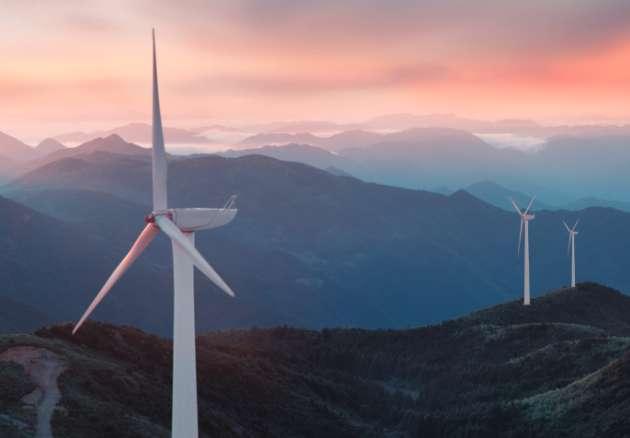For many, the word “infrastructure” evokes images of expansive highways, electrical lines and large-scale power plants. We appreciate its role in our everyday lives, however, we may not recognize infrastructure as an investment opportunity.
We believe that for investors who are exploring the world of private markets, infrastructure is worthy of study and consideration—because as the infrastructure landscape changes before our eyes, the investment opportunity continues to evolve as well. This edition of our Private Market Insights newsletter is intended to help propel that conversation.
What is infrastructure, and why is it important?
Infrastructure generally refers to long-lived physical assets that provide an essential service to the economy. The assets often have predictable cash flow profiles through long-term contracts or monopolistic positions. Examples of infrastructure sectors include utilities (water treatment plants, power plants), logistics/distribution networks (highway and rail systems, airports), telecommunication networks (cellular towers, fiber networks, data storage), and commodity storage and transportation (oil and gas, agriculture).
These infrastructure assets are essential in producing economic growth.
How has the investment opportunity evolved?
The evolving investment opportunity in infrastructure is closely related to the evolution of infrastructure asset ownership and funding sources for future projects.
Historically, governments were strong supporters of infrastructure, whether through policy or direct budgetary funding that drove the build-out of new projects. However, in the years following the Global Financial Crisis, many government budgets retrenched, leaving less funding available to support a growing demand for infrastructure projects. As a result, a gap has emerged over the past 15 years between the need for new infrastructure and the availability of capital to build it. It has increasingly fallen to the private (non-government) sector to build out future projects.
But governments still play an important role. While they own less than a quarter of infrastructure assets, their policies have a large effect on the infrastructure owned by the private sector.1 Funding will come primarily through the private sector from either publicly traded markets or private markets. Today, there are numerous infrastructure indices, ETFs and mutual funds for “listed infrastructure” that trade on exchanges, as well as privately held non-traded infrastructure investments in both equity and debt (“private infrastructure”). Each private sector investor is incentivized by tax policies and direct subsidies put in place by federal and local governments.
What is changing with the infrastructure asset class?
The composition of infrastructure has been changing in recent years. Historically, infrastructure was focused on traditional forms of energy and power as well as transportation assets. Today, the fastest-growing sectors are digital—for example, data centers and fiber networks—and sustainable sectors linked to the energy transition, such as renewables and battery storage.
These more recent sectors of infrastructure are more technological, cleaner and more driven by private markets capital than legacy sectors, which has created an opportunity to include this asset class more meaningfully in portfolios at scale.2
There is substantial demand for—and investment in—these new types of infrastructure.
Consider the following points that illustrate this trend:
DIGITAL INFRASTRUCTURE AND THE “INTERNET OF THINGS.”
Globally, experts expect 4x growth in data usage over the next five years. Investments laying fiber, broadening mobile networks, implementing 5G upgrades, building data centers and launching satellites will support the continued growth of the innovation economy, e-commerce and the “Internet of Things.”3
Additionally, four billion people worldwide are not connected to broadband internet. This represents massive untapped potential to unleash human ingenuity and creativity. Indeed, every 10% increase in 3G broadband penetration is estimated to increase annual GDP in developing countries by 1.4%. Increasing the speed to 4G and 5G in those same markets is estimated to add incremental GDP growth of 1.2% and 2.1%, respectively. The required investment to make these upgrades is estimated at more than $100 billion per year over the coming decades, with 72% coming from the private sector.4
SUSTAINABLE INFRASTRUCTURE AND THE ENERGY TRANSITION.
It is estimated that 80% of the global energy mix will be powered by renewable energy by 2050.5
In the U.S., 42% of electricity generation is expected to be produced from wind and solar by 2030, requiring over $900 billion of additional investment.6
Estimated sources of power generation by 2030
Some of this has already begun. Clean energy investment has been higher than fossil fuel investment for the past eight years, with the gap continuing to widen.7
Global energy investment in clean energy and in fossil fuels, 2015-2023
In 2023, investment in solar power will surpass investment in oil production for the first time.8
Oil production investment and solar investment, 2013 vs. 2023
Cumulative U.S. wind and solar capacity
In addition, investment into energy efficiency and electrification continues to increase.8
End use investment, 2019-2023
OPPORTUNITIES BEYOND RENEWABLES.
Climate infrastructure investments are about much more than renewables such as wind and solar, because climate issues are only partially driven by power generation.8
Annual clean energy investment, 2015-2023
Historical source of global man-made greenhouse gas emissions, 1990-2019
Beyond renewables lies nuclear power generation as well as energy storage and grid improvements, which are required to handle the decentralized and variable loads of renewables.
Additionally, emerging industries such as green hydrogen are likely to become important for carbon mitigation in industries such as materials processing (e.g., iron and cement) and electricity storage. Today, two-thirds of S&P 500 companies have now set carbon targets.9 The Financial Times estimates that a net-zero world could require 500 million tons of hydrogen annually, which would mean $20 trillion of investment in the space by 2050.10
And beyond those are what may be the fastest-growing sectors of all: energy efficiency (including residential, industrial, buildings), district heating, biofuels, food production/agriculture, building materials, carbon extraction, carbon sequestration and carbon markets.
Some of the most interesting water projects address the wastewater treatment of effluent, typically from dairy farms and municipal water treatment facilities. In these facilities, the water is treated and cleaned while the waste is processed into biogas that can be burned to generate electricity. This process also eliminates methane from the wastewater, which is a 28x stronger greenhouse gas than carbon dioxide.
All of these industries are potential targets for today’s infrastructure investors.
Where is the money coming from?
An estimated $3.7 trillion of global infrastructure spend will be required through 2035. Government spending alone is likely to fall far short of this amount, with the difference needing to be made up by investments from the private sector.11
However, governments around the world have passed various pieces of legislation that increase commitments to subsidies and other programs designed to help offset some cost and spur investments by the private sector. For example:
- The ITU/UNESCO Broadband Commission, working toward the UN 2030 Agenda, pushes governments in developing markets toward widespread broadband access in their countries through plans and budgets.12
- The U.S. Infrastructure Investment and Jobs Act committed $65 billion to broadband infrastructure to connect the 30 million rural Americans affected by the “digital divide,” as well as to encourage 5G rollout.13
- The Infrastructure Investment and Jobs Act committed $50 billion to improve American drinking water, wastewater and stormwater infrastructure.14
- The Inflation Reduction Act provided more than $800 billion in U.S. federal spending on climate infrastructure.15
- The EU “Green Deal” of 2020, which committed €600 billion to push the EU toward climate neutrality by 2050, targets clean energy, sustainable industry, buildings, toxic pollution, farm-to-fork agriculture and biodiversity.16
- Following the UN Climate Change Conference in Glasgow in 2021, many global governments legislated action for reaching their countries’ 2015 Paris Climate Agreement goals.
Over 70% of decarbonization capital will need to come from private investors
Federal support continues to propel renewables growth
An attractive opportunity
Despite differences between the infrastructure of the past and present, some important consistencies remain. We view infrastructure as a fundamentally non-cyclical asset class with:
- A critical social purpose
- Long useful life
- Long-term predictable cash flows
- Potential inflation hedge
- Low correlation to other asset classes
It is also important to understand that, as with real estate, there is a broad range of infrastructure risk profiles, ranging from “core” (low risk, fixed income-like return) to “core-plus,” “value-add,” and “opportunistic” (higher risk, private equity-like return). This means infrastructure can find an appropriate home in a wide range of investors’ portfolios.
For investors without an allocation, infrastructure presents worthwhile future study and consideration.





